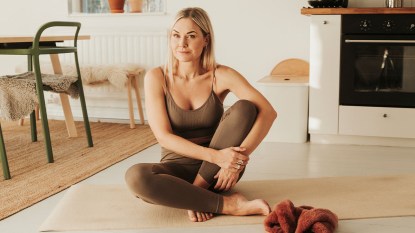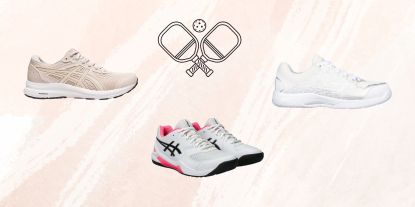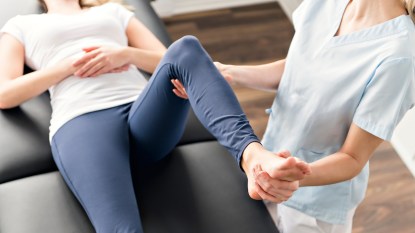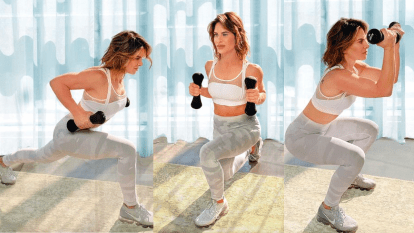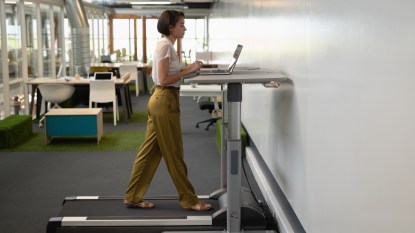The One At-Home Workout That Finally Cured My Back Pain
Plus, three simple moves you can do right now.
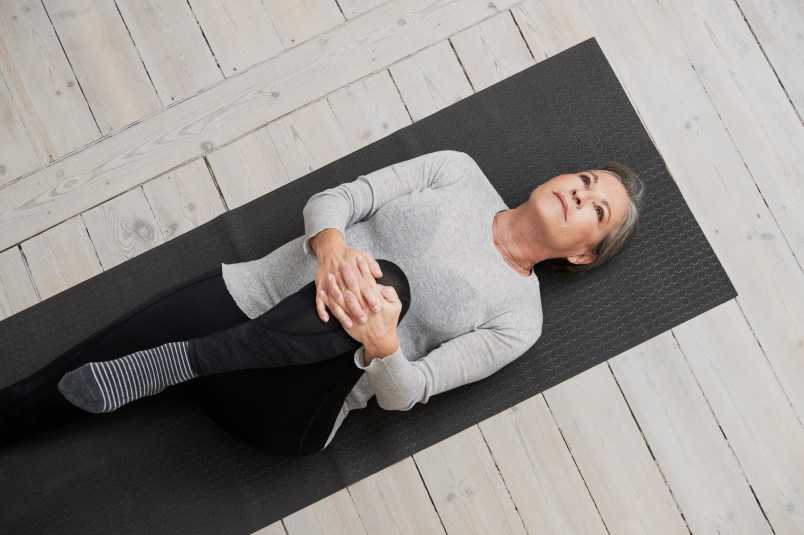
“Just a few more steps until I get to the bench,” Juanita Presley told herself as she struggled to keep up with her grandchildren who were bounding toward Sleeping Beauty Castle at Disneyland. “My family’s annual trip to Disneyland was something I looked forward to all year,” says Juanita. “Our group had grown to more than a dozen over the years, and I’d look forward to watching the youngest members of the family experience the Happiest Place on Earth with joy and wonder in their eyes.
“But on this trip, the throbbing in my back had become too much to bear, and I kept losing my balance and stumbling. My kids joked that they wanted to swaddle me with Bubble Wrap, but I reluctantly admitted that we should rent a wheelchair. I felt like such a burden: Pushing me around slowed everyone down. I knew something had to change, but I wasn’t sure what could be done.
“I struggled with back pain for a large part of my 78 years. I rarely went out, but I frequently had to travel for business, which was difficult and painful. The last few years before I retired, I pretty much curtailed my business travel and was sending others in my place. But I wasn’t comfortable at home either — even doing everyday chores like grocery shopping was difficult, and I often found it impossible to sleep because of the pain.
“Eventually, after many appointments, my doctor diagnosed me with spinal stenosis — a condition that’s caused by narrowing in the spine that puts pressure on the nerves. Surgery was an option, but my doctor recommended seeing a pain-management specialist first. He prescribed an opioid painkiller as well as quarterly epidurals to numb the area, but they didn’t seem to help.
“After I retired and had some more time to devote to my recovery, I started doing research on my surgical options. The idea of back surgery scared me, but I ultimately decided that the side effects couldn’t be worse than being in constant pain. The surgery was a success, but unfortunately, it did not alleviate my pain, which I learned is apparently quite common.
“About two years after the surgery, I received a postcard in the mail about the grand opening of Club Pilates, a chain of Pilates studios, in my city. They were running a promotion for a free introductory class, and I’d heard Pilates can help with pain, so I decided to see what it was all about.
“I was hooked after just one class! It eased my pain immediately and made me feel more energetic. The instructors were knowledgeable and helpful, and they were always able to modify the sessions to help me avoid injuring my back. I bought myself a membership, and at the very beginning, I was going almost every day. But even after I stopped taking classes every day, I made sure to do a workout at home at least twice a week.
“Three months after my first class, I had an appointment with my pain doctor, and I was able to tell him that I didn’t need my scheduled injection — I think it surprised both of us actually! Over the course of the next several months, I was able to step down my pain medications as well — and now I’m not taking any of them.
“What’s more, I’m feeling better than ever. I’ve lost 20 pounds, and I feel happier as well. I have a more positive outlook on life, and I think pilates had a lot to do with it.
“It’s been months, and though I still feel a little unbalanced at times, I haven’t fallen once. It’s made a huge difference in how confidently I move through the world. The best part: This year, I was able to go to Disneyland with my family without the wheelchair! I simply don’t need it anymore.”
How Pilates Helps Back Pain
Spinal stenosis occurs when the spinal column narrows, compressing the nerves and causing back pain as well as numbness and weakness in the legs, says John Mayer, D.C., Ph.D., chairman of the exercise committee at the North American Spine Society.
While gentle movement can ease other forms of back pain, the opposite is true with stenosis since moving the wrong way can further compress the nerves. Fortunately, pilates can help.
“Pilates trains the core to help you maintain a neutral spine posture,” Mayer explains. And studies show that the workout has long-term outcomes similar to surgery — without the risk of complications. To get the benefits, Mayer suggests taking a pilates class to learn proper posture. Then follow Juanita Presley’s lead and try these moves at home twice a week.
Forearm Plank

Planks work the transverse abdominis muscles, which stabilize the abdomen to support a neutral spine.
To do: Start on the ground on all fours. Carefully lower onto your forearms, pressing your hands into the floor. Extend your legs out straight, keeping your body in a straight line from your head to your heels as much as possible. Hold for 15 seconds.
Hinging Bridge

This move engages the glutes and erector spinae muscles to better support the spinal column.
To do: Lie on your back, knees bent, feet flat and arms by your sides. Make sure your pelvis is in a neutral position (you should have a small space between your lower back and the floor). Engaging your core and glutes, lift your hips, keeping your upper back on the ground. Do eight reps.
Bird Dog
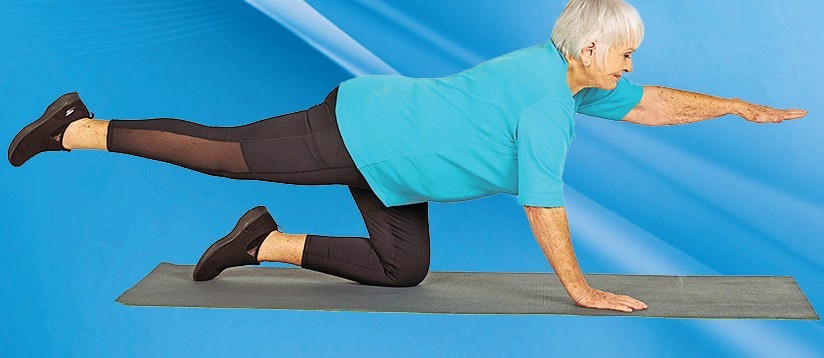
This strengthens the stabilizing posterior core muscles to relieve pressure on the spine.
To do: Start on all fours with your wrists under your shoulders and your knees under your hips. Slowly extend your left arm ahead and your right leg back, keeping your core tight and your back flat. Return to start. Repeat on the other side. That’s one rep; do eight total.



